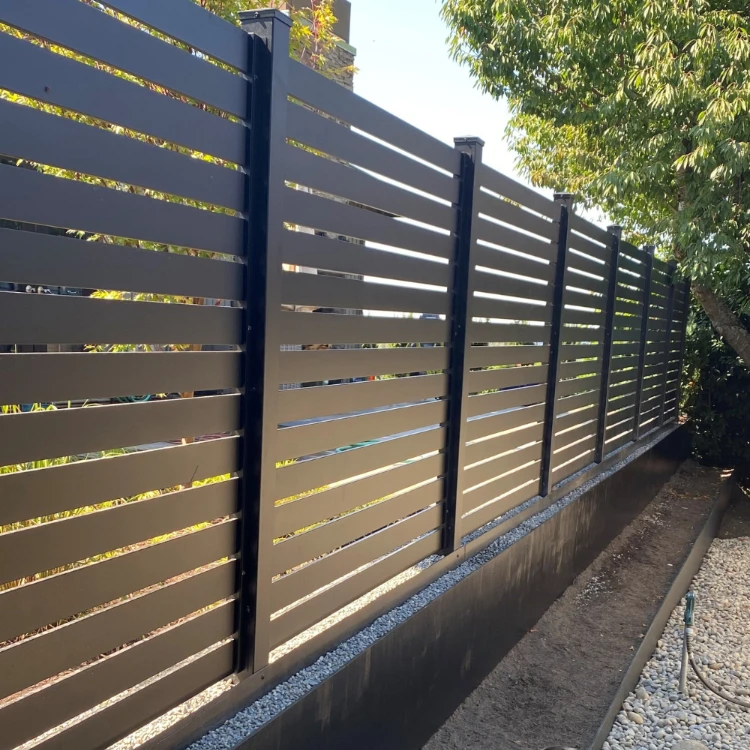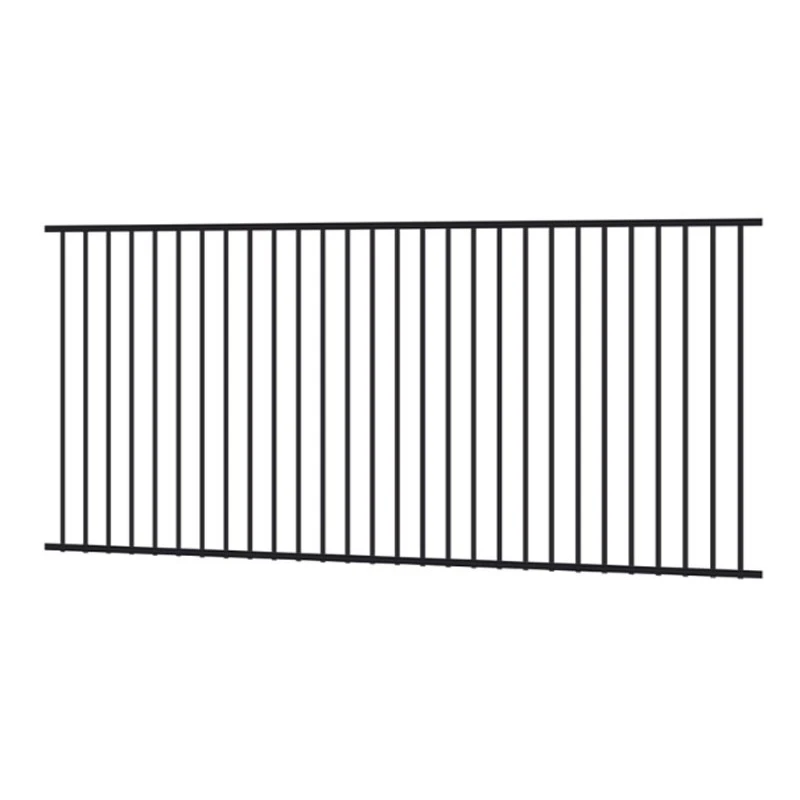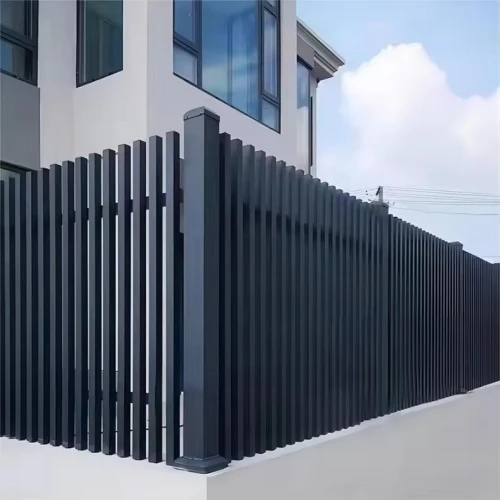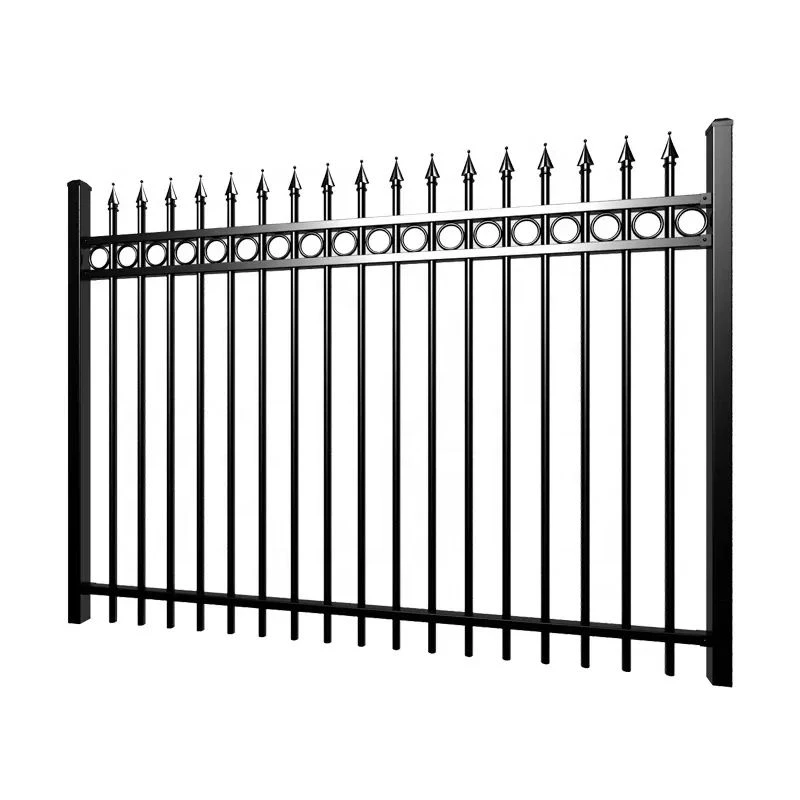Aluminum alloy fences are widely used in modern architectural and industrial settings due to their numerous advantages:
Strong Corrosion Resistance, Suitable for Harsh Environments: Aluminum alloy materials exhibit excellent corrosion resistance, effectively withstanding corrosive factors such as acid rain and salt spray, making them suitable for various harsh environments.Rust-Free with Extended Lifespan: Unlike traditional metal fences, aluminum alloy fences do not rust, ensuring a long service life and reducing maintenance costs.
Easy Assembly, Enhancing Work Efficiency: The groove design of aluminum alloy profiles simplifies the assembly process, making it quick and efficient.
Lightweight, Facilitating Transportation and Installation: Aluminum alloy is lightweight, reducing the difficulty of transportation and installation, thereby saving labor and time costs.
Safe and Reliable, Providing Effective Protection: Serving as peripheral protection for production equipment, aluminum alloy fences prevent direct contact between operators and equipment, acting as a safety warning, improving the work environment, and enhancing work safety.In summary, aluminum alloy fences, with their durability, aesthetic appeal, and practicality, have become the ideal choice for modern protective facilities, meeting customers' demands for high-quality fencing products.
How Does Aluminum Fencing Compare to Other Fencing Materials?
Aluminum fencing stands out when compared to other fencing materials due to its unique combination of durability, maintenance ease, and aesthetic appeal. When compared to wrought iron, aluminum offers a significant advantage in terms of rust resistance. Wrought iron is prone to rusting and requires frequent maintenance, including sanding, priming, and painting to prevent corrosion. Aluminum, on the other hand, does not rust, making it a more practical choice, especially in humid or coastal areas. In terms of strength, wrought iron is generally stronger than aluminum, making it a better choice for high-security applications. However, for most residential and commercial purposes, aluminum provides sufficient durability while being much lighter and easier to install. Compared to steel fencing, aluminum is also more resistant to rust and requires far less maintenance. Steel is extremely strong and secure, but it is heavier and more challenging to install. Additionally, steel fences are often more expensive due to material and installation costs. For homeowners and businesses looking for a balance between strength and ease of use, aluminum is an excellent alternative. When considering vinyl fencing, aluminum has a more sophisticated and elegant appearance. Vinyl fences are low-maintenance, like aluminum, but they can become brittle over time, especially in extreme weather conditions. Vinyl can also warp or discolor due to prolonged sun exposure. Aluminum fencing, with its powder-coated finish, maintains its color and structure much longer, offering better long-term aesthetics. Compared to wood fencing, aluminum has clear advantages in durability and maintenance. Wood fences require regular staining, sealing, and repairs due to warping, rotting, and insect damage. Aluminum, by contrast, is immune to these issues and retains its structure and appearance with minimal upkeep. Additionally, aluminum fences offer more design options, including decorative styles that resemble wrought iron but without the associated maintenance. Chain link fencing is another common alternative, but it lacks the aesthetic appeal of aluminum. While chain link fences are affordable and functional for security purposes, they are not as visually appealing as aluminum fencing. Aluminum fences provide security while enhancing the property’s overall appearance, making them a better choice for residential and decorative applications. Another aspect to consider is the installation process. Aluminum fences are relatively easy to install due to their lightweight construction and pre-assembled panels. In contrast, materials like steel and wrought iron require professional installation due to their weight and complexity. Overall, aluminum fencing provides an excellent balance of durability, low maintenance, aesthetic appeal, and cost-effectiveness, making it one of the best fencing options compared to other materials.
What Are the Common Applications of Aluminum Fencing?
Aluminum fencing is used in a wide range of applications due to its versatility, durability, and elegant appearance. One of the most common uses is for residential properties. Homeowners choose aluminum fencing for front yards, backyards, and pool enclosures because it provides security without obstructing views. Unlike solid fencing materials, aluminum fences allow for visibility while still defining property boundaries and keeping children and pets safe. Many residential aluminum fences mimic the look of traditional wrought iron, adding a sophisticated touch to homes. Another important application of aluminum fencing is for commercial properties. Businesses, office buildings, and retail centers use aluminum fencing to enhance security while maintaining an attractive exterior. Unlike chain link fences, aluminum fences offer a more polished and professional look, making them ideal for locations where aesthetics matter. Many commercial properties also use aluminum fencing for perimeter security, outdoor seating areas, and parking lots. Aluminum fencing is also widely used in pool enclosures. Many building codes require fencing around pools for safety reasons, and aluminum is one of the best choices due to its rust resistance and durability. It withstands constant exposure to water and humidity without deteriorating. Additionally, aluminum fences meet safety standards while providing an open, stylish appearance that blends well with pool surroundings. Another popular application is for parks and recreational areas. Public parks, playgrounds, and sports facilities often use aluminum fencing because it is sturdy, weather-resistant, and requires little maintenance. It is commonly used to enclose playgrounds, sports courts, and walking trails, ensuring safety without compromising the aesthetic appeal of the area.











